Russia Uses 27 Iranian Drones In Large-Scale Attack On Ukraine
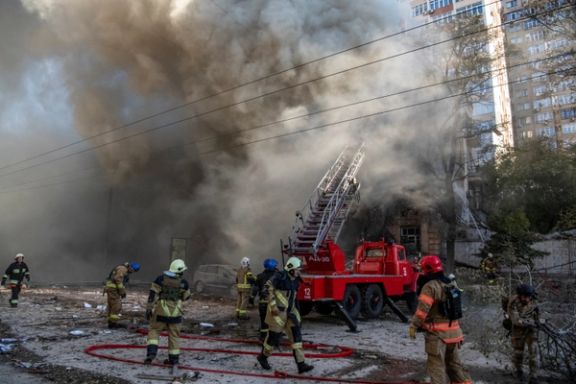
Russia used 27 Iranian-made drones and 30 missiles to attack large swaths of Ukraine early on August 6, as a conference took place in Saudi Arabia exploring options for peace.

Russia used 27 Iranian-made drones and 30 missiles to attack large swaths of Ukraine early on August 6, as a conference took place in Saudi Arabia exploring options for peace.
The Russian attack came in two waves. First, missiles were fired at various targets late on August five, and the second wave followed on August 6, when the Iranian drones were used.
Ukrainian officials said all 27 Shahed 136 and 131 drones were shot down by air defenses but some of the missiles fired from the Black Sea and the Caspian region got through.
Russia regularly uses the Iranian drones during massive missile attacks to overwhelm Ukraine’s air defenses, although Kyiv’s military has learned how to shoot down most of the relatively slow-moving Unmanned Aerial Vehicles (UAVs).
Iran has supplied hundreds of the killer drones to Russia since mid-2022, but insists it is neutral in the war and is not arming Russia.
US Defense Intelligence Agency (DIA) has decided to show foreign officials “undeniable” evidence of the Iranian origin of the drones shout down over Ukraine NBC News reported on Friday.
Washington first warned about Tehran’s plan to supply attack drones to Russia in July 2022 and in October it announced that indeed Moscow had started to use Shahed kamikaze drones against Ukraine. In February the DIA issued a report saying that analysis confirmed Russia’s use of various lethal Iranian unmanned aerial vehicles (UAVs) against Ukraine.
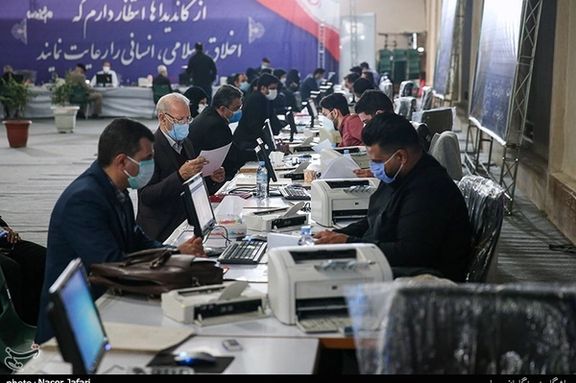
Iran has started candidate pre-registration for the parliamentary elections scheduled for March 1, 2024, urging those interested to start the process of vetting.
Thousands of people usually apply to be approved as candidates in Iran’s legislative elections, but most are disqualified by the constitutional watchdog, the Guardian Council, and the interior ministry.
Any aspirant for candidacy must first be a loyal supporter of the clerical regime. No critics or dissidents have ever received approval to run in elections. However, the highly controversial vetting reached a new level of discrimination in the 2020 parliamentary elections, when most moderate regime insiders were also banned. The result was a parliament dominated by ultraconservative hardliners.
Candidate registration usually takes place one month before the vote, but this year the government has decided to launch early registration that will last one week. The scheme seems to be designed to create an aura of a more democratic electoral environment, but in practical terms it changes nothing in the vetting process. It will also allow more time for the government to check the background of those who pre-register.
Interior Minister Ahmad Vahidi Sunday urged prospective candidates to register now but resign in the final official registration.
In Tehran, analysts, as well as many regime politicians, have been warning that, following the 2020 experience, only hardliners are likely to register for March 2024. This will hurt the credibility and the legitimacy of the next parliament, amid an already tense political environment after months of popular protests.
Many have urged the government to organize a more inclusive vote, allowing reformists and moderates to compete next year.

The Islamic Republic of Iran is about to create its fourth full-fledged intelligence agency mainly to respond to growing domestic opposition and likely protests.
In fact, it is perhaps not accurate to say that the regime is creating a new agency, rather it is elevating the existing “protection and intelligence” department of its notorious Judiciary to an intelligence “Organization.”
The same process took place 13 years ago when the intelligence department of the Revolutionary Guard was elevated to the status of an ‘organization’ in the aftermath of mass protests in 2009. Since then, the IRGC’s intelligence arm has become the leading instrument for domestic repression.
Media in Tehran say that starting Sunday the Islamic Republic’s parliament will discuss a bill presented more than a year ago to officially elevate Judiciary’s intelligence organization. That would mean more power and budget for another instrument of repression amid the regime’s fear of renewed unrest as the first anniversary of last year’s Mahsa protests approaches.
Last December, a lawmaker commenting on the initiative said that gathering information and reports about sensitive cases “to counter the propaganda campaigns by the global arrogance” is part of the duties of the new organization, indicating that the body will also coordinate with other entities outside the judiciary’s apparatus. “Global arrogance” is a term used by the Islamic Republic to refer to the United States.
The clerical regime is known for its habit of creating parallel bureaucracies, having dozens of organizations for Islamic propaganda, or actually keeping two distinct militaries, the IRGC and the traditional army called Artesh in Persian.
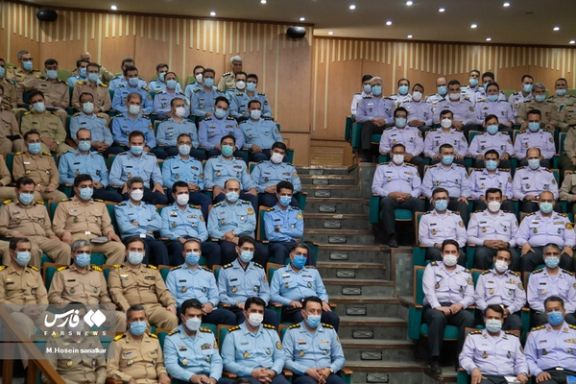
Part of this modus operandi stems from the internal politics of the regime and the need to dole out power and perks to factions and players in its inner circles. But in some areas, such as intelligence it could be an authoritarian impulse not to trust any single organization with the security of the regime’s inner core.
Four decades ago, there was only one official domestic-foreign intelligence bureaucracy – the Ministry of Intelligence – or information, as the Persian word for both is interchangeable. Then came the IRGC and the police intelligence organizations, to be augmented now with Judiciary’s parallel arm.
Unlike Western countries, such as the United States, there is no sign of distinct areas of responsibility between the four top intelligence-security organizations. They all spy on citizens, arrest dissidents with or without a warrant, have their own offices in infamous prisons such as Tehran’s Evin penitentiary. They all interrogate, and torture political prisoners and extract forced confessions. The only discernible distinction is that the Ministry of Intelligence and the IRGC intelligence have extensive foreign operations.
Speaking of foreign espionage and black ops, there is, in fact, a fifth entity, the IRGC Quds Force, that controls tens of thousands of paid militia forces throughout the Middle East. These forces are used for espionage, political influence operations, intimidation of politicians and groups in other countries, and the use of force.
The Iranian regime, which also has smaller intelligence entities has a Council for Intelligence Coordination comprised of at least 13 to 16 separate active intelligence agencies, according to different sources. Most of these parallel agencies have strong ties with the IRGC and the judiciary as well as the office of the Supreme Leader. The intelligence minister, the interior minister, foreign minister, and the country’s chief justice are members of the body. The IRGC’s Intelligence Organization, and its Intelligence Protection Organization, and their counterparts in the traditional Army and Police force as well as cyber police are some of the other members.
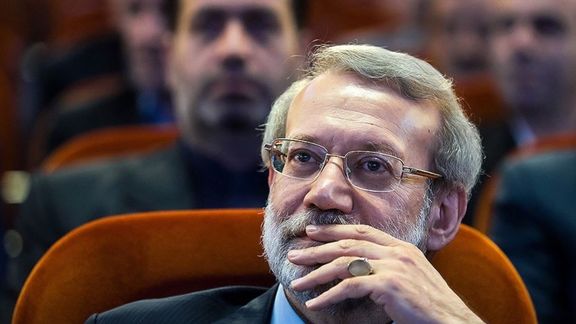
The core of Iran’s regime seems to be looking for ways to make the upcoming parliamentary elections a bit more credible, given all the limitations on who can run.
One of the political figures much discussed in the past month as a possible leading candidate for the March 2024 legislative elections is former parliament speaker Ali Larijani, a moderate conservative who was not allowed to run in the 2021 presidential race by the Guardian Council under the control of Iran’s ruler Ali Khamenei.
However, in a statement that sounded like an indirect message to Larijani, the spokesman for the Guardian Council, a body that vets election candidates said: "If someone has been disqualified for running for President, it does not mean he cannot run for parliament."
Entekhab news website quoted Guardian Council Spokesman Tahan Nazif on Wednesday as sayingthat the regulations for parliamentary (Majles) elections are different from those the presidential elections.
Larijani’s disqualification two years ago came as a shock not only for the general public but also for many regime insiders, who could not find a justification as to why a three-term parliament speaker could run for president.
The statement by the Guardian Council now gives Larijani's supporters, generally moderate conservatives and reformists, peace of mind that they can start campaigning for Larijani, hoping that others named in the same elections lists with him will also make it to the parliament.

However, Larijani has not signaled his readiness to run and he is perhaps weighing his options whether to run from Tehran where his election would guarantee the election of another 29 candidates, or from his traditional constituency in Qom.
Considering his cautious character, Larijani might prefer to run from Qom where one or two hundred thousand votes can get him through. However, moderates and reformists might have to persuade him to run from Tehran to benefit from his popularity for other likeminded candidates.
Another politician who was barred from running in two presidential elections, is former President Mahmoud Ahmadinejad. However, according to the reformist Arman Melli daily, he has been conspicuously silent about the 2024 Majles election.
The daily wrote that the reason for Ahmadinejad's silence is that he wishes to send several of his aides to the Majles and does not want to invite controversy and trouble for them before the elections. Arman Melli added that Ahmadinejad's men might enter the election as a group separate from the likeminded ultraconservative Paydari Party.
Nonetheless, according to the daily, Ahmadinejad's men might link up with Paydari when they deem it beneficial for their electability. However, Ahmadinejad himself is unlikely to run for any office other than the presidency.
Many media outlets in Tehran quoted reformist daily Etemad as having reported about rivalries in the conservative camp. Neocons led by current Majles speaker Mohammad Bagher Ghalibaf are attacking the hardliner Paydari Party in a pre-election battle. Ghalibaf's men and their media outlets teasingly call the Paydari politicians "super revolutionaries" and highlight their blunders and inefficiency.
Ghalibaf's neo-cons have threatened the Paydari to either accept a compromise with them or risk being ostracized by other conservative groups, said Etemad. The daily wrote that Ghalibaf's men are aware of Paydari's weaknesses and take advantage to exert their influence.
This comes while many in Iran, including reformist politician Mohammad Sadeq Javadi Hesar are aware that "elections are non-democratic," as he told Etemad Online, and the fate of the elections are determined at Khamenei's office, his Guardian Council, and the IRGC headquarters, as it has been the case in the past two elections.

A tourism industry representative in Iran has accused the government of providing false statistics on the growth of foreign tourism.
In an interview Hormatollah Rafi'ee quipped, "We are professionals in [ producingfalse] statistics," referring to the government.
He went on to express concerns about the country's inability to capitalize on tourism opportunities. He revealed that despite growth claimed by officials, the number of incoming tourists has in fact declined in recent years. This revelation raises questions about the accuracy of previous reports and the underlying challenges faced by Iran's tourism sector.
Last year, the government claimed the number of foreign visitors increased by 132 percent reaching 4.2 million people, amid the lingering COVID pandemic, which surprised many.
For years, Iran has been a destination of interest, enticing foreign visitors with its historical heritage. Even with strict dress codes for women and restrictions on alcohol and nightlife after the 1979 Islamic Revolution, a small but steady stream of mainly European tourists continued to visit the country.
Hopes for a significant boost in tourism arose when Iran and major powers reached a landmark nuclear deal in 2015.
However, these hopes were shattered when then-US President Donald Trump unilaterally withdrew from the agreement three years later, triggering a downturn in tourism prospects.
Last year, the country witnessed mass protests and detained more Europeans prompting several Western countries to issue travel advisories warning their citizens against visiting the country, citing the risk of "arbitrary detention."
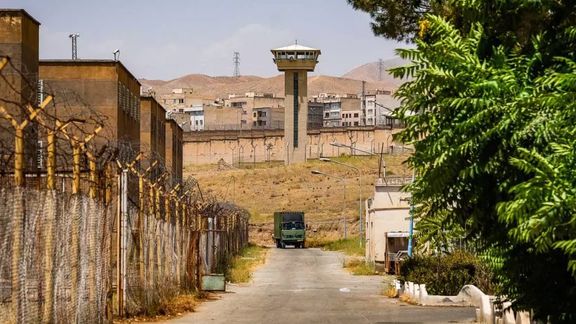
Iran's judiciary has confirmed that it is relocating inmates from the Rajaei Shahr Prison in Karaj, as many believe its large land will be sold to developers soon.
“Prisoners of this prison, which is located in one of the best areas of Karaj, are being relocated to another prison,” the judiciary’s media center said in a statement on Thursday.
Rajaei Shahr (formerly Gohardasht) Prison, considered as one of the harshest prison environments in the country, is in Karaj, a city less than 30 kilometers west of the capital Tehran. Originally built before the Islamic Revolution of 1979 in the outskirts of Karaj, the prison is now in the middle of one of the city’s most expensive areas.
One reason why the prison lives in infamy is the massacre of hundreds of political prisoners there in 1988. Iran's first supreme leader, Ruhollah Khomeini, ordered the killing of prisoners who were members of MEK (The People's Mojahedin Organization of Iran), an armed opposition group, and also Marxists serving their sentences.
Since 2009, when thousands were arrested after a disputed election, many well-known political prisoners and activists were held at Rajaei Shahr alongside other prisoners most of whom were serving sentences for drug-related offenses.
On several occasions in the past two years, protesters have staged sit-ins outside Rajaei Shahr to prevent the execution of political and other prisoners.
“The plan to relocate prisoners ensues from the government’s fear of repetition of such [civil] resistance [to execution],” Seda-ye Shahrivar Twitter account which is dedicated to news of protests and dissent wrote, adding that security forces are planning to relocate prisoners of at least twenty major jail in provincial capitals across the country to remote prisons.
“In fact, the closure of Rajaei Shahr is meant to facilitate suppression, harassment and execution of prisoners, making people’s access to their imprisoned loved ones difficult, and increasing the distance between prisons from places where life is happening,” Seda-ye Sharivar wrote.
The judiciary’s statement did not mention videos posted on social media that show prisoners already being taken from Rajaei Shahr to the notorious Ghezel Hesar Prison. Social media reports indicate that some of last year’s protesters including Mohammad Beroghani who has been sentenced to death are among those transferred to Ghezel Hesar.
According to Seda-ye Sharivar, relocation of prisoners started on the evening of July 31 without prior announcement and since then at least 300 inmates, including many political prisoners, have been sent to Ghezel Hesar.
Ghezel Hesar, Iran's largest prison which houses around 20,000, is located in the Alborz Province, 20 km (12 miles) to the northwest of the capital Tehran, and is also near Karaj. Ghezel Hesar has mainly housed around 20,000 ordinary prisoners, four times more than it had been built for.
“This prison is among the evidence of the crime [mass execution of political prisoners in 1988] and its layout was repeatedly mentioned in the trial of Hamid Nouri [in Sweden],” senior journalist of Radio Zamaneh, Farzad Seifikaran, wrote about Rajaei Shahr, adding that any building development could obliterate some of the most important proof of the atrocities committed against political prisoners who were executed in thousands over a few months.
The government of President Ebrahim Raisi on June 22, 2022, allowed the judiciary to sell both Rajaei Shahr, an estate of nearly 600,000 sqm (150 acres), and pay the proceeds to the government.